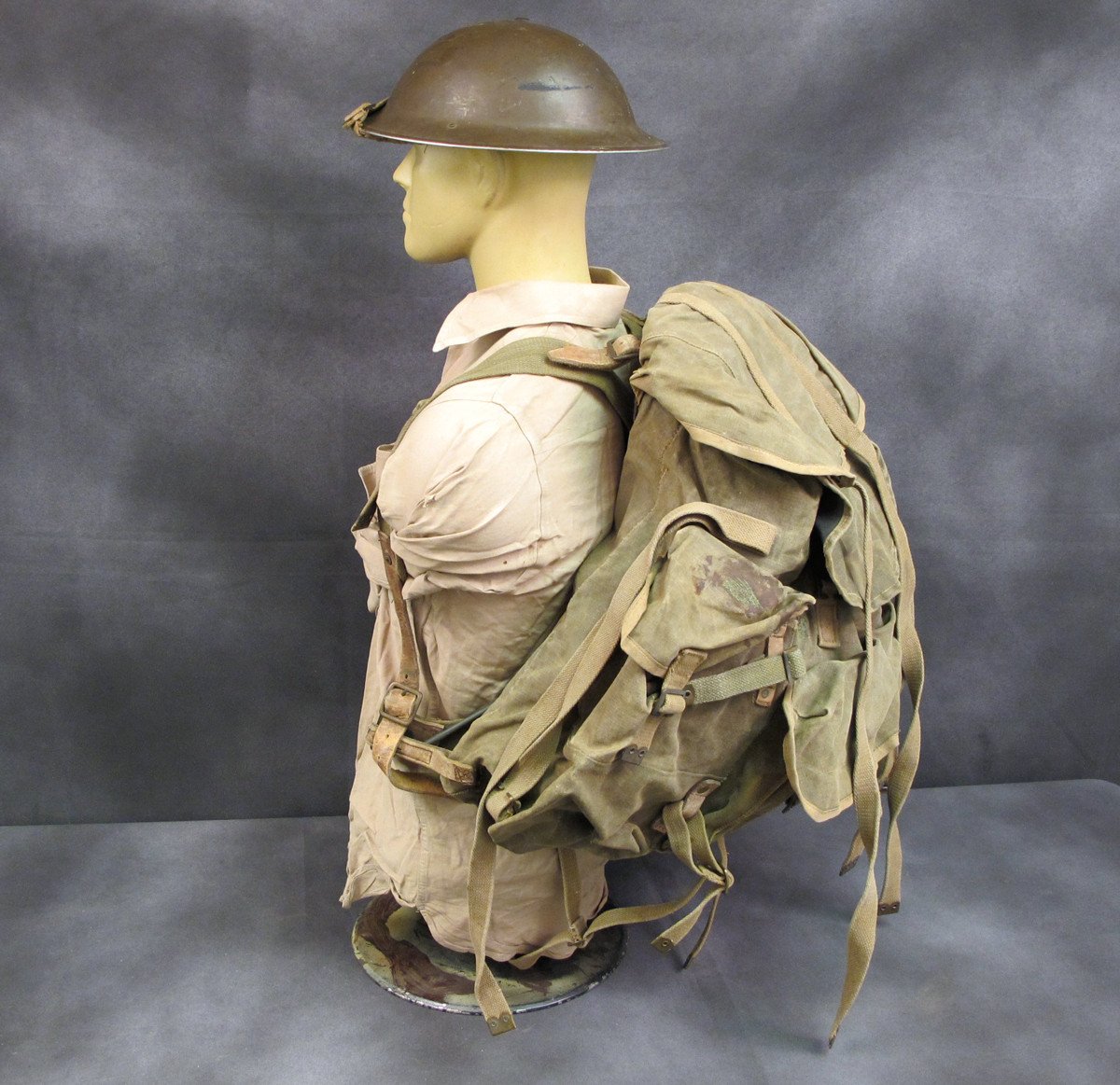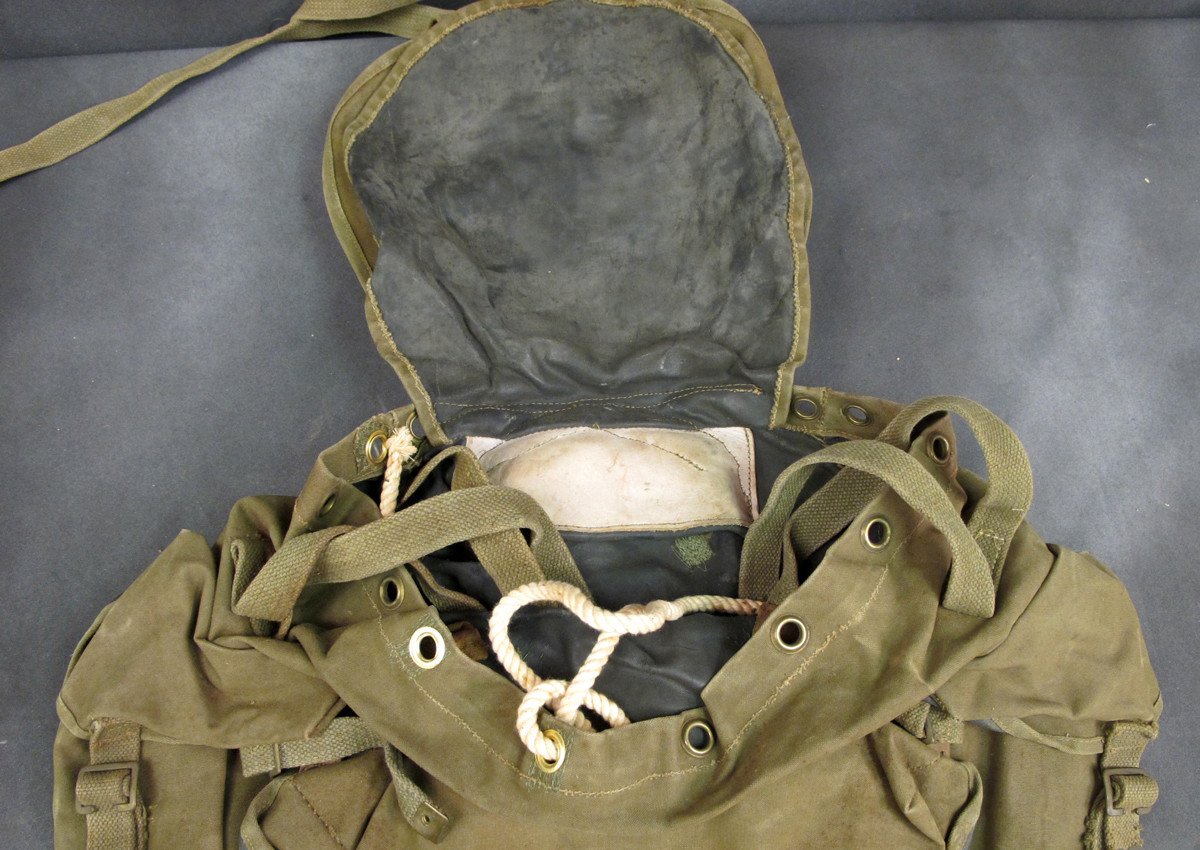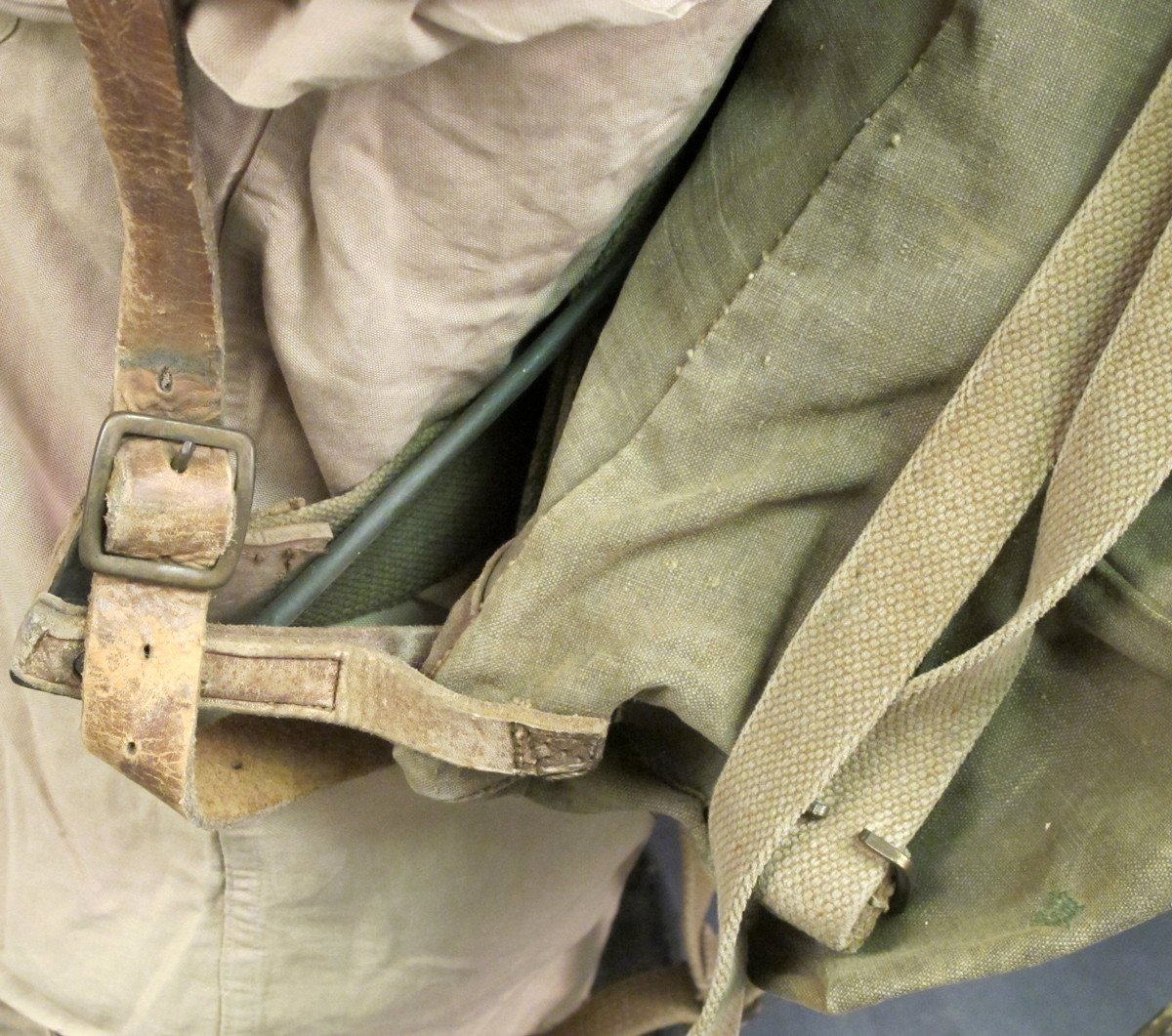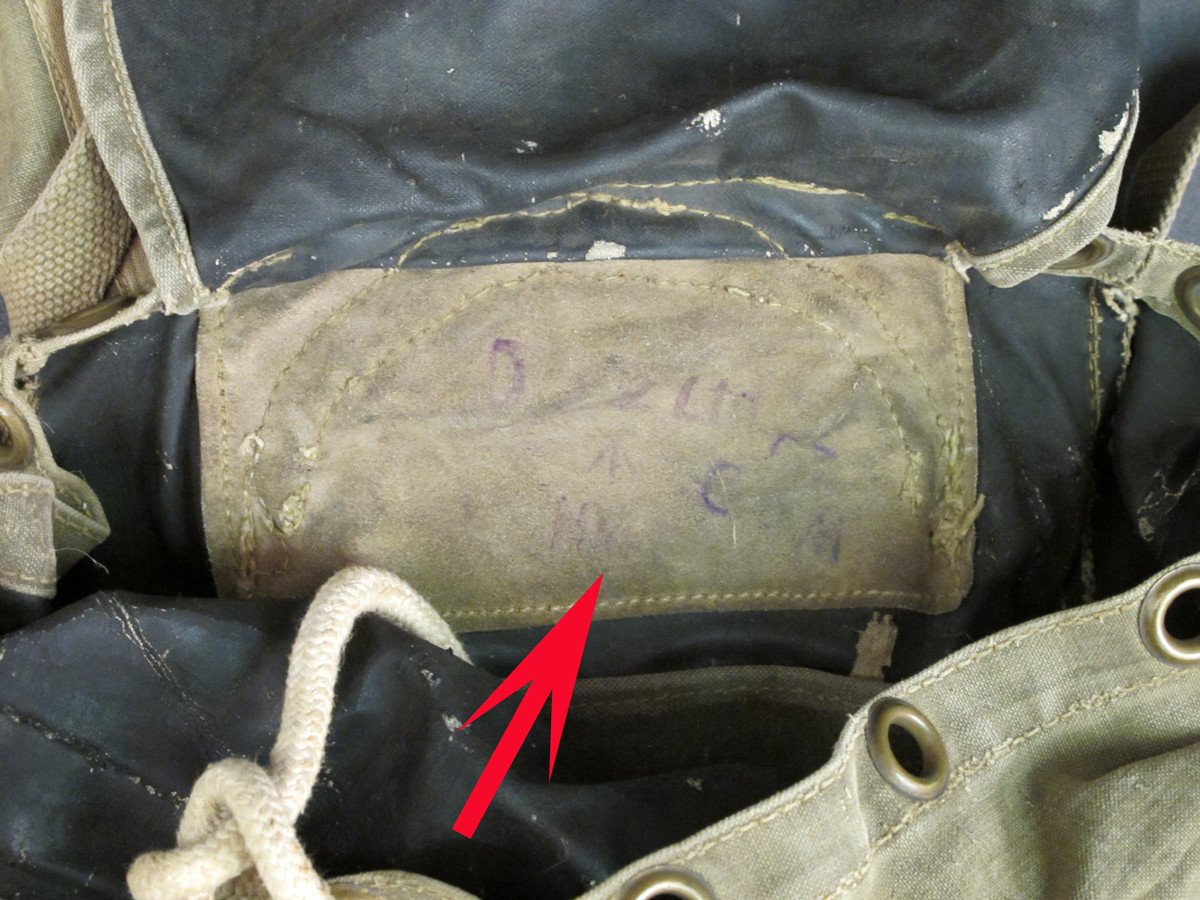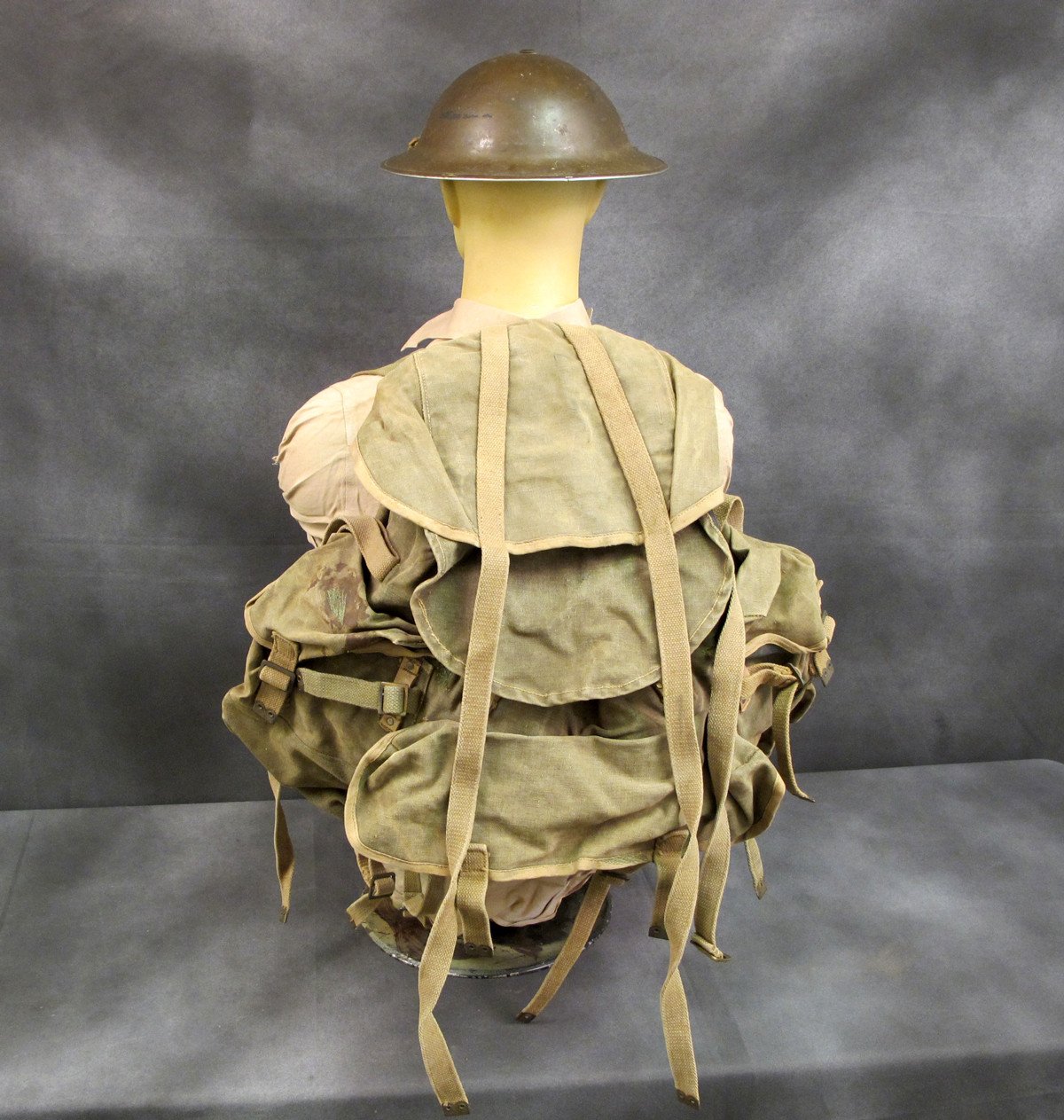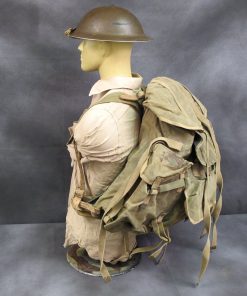British WWII Era Commando P42 Bergen Rucksack Original Items
$ 199,95 $ 79,98
Original Item: Just two days after the end of the Dunkirk evacuation in June of 1940, the British Commandos were created, after a request from Winston Churchill to form an elite butcher and bolt raiding force to generate a reign of terror down the enemy coast. It soon became apparent that such an outfit would need load bearing equipment that would support long-range independent operation, in other words, large capacity, versatile design, and rugged construction. Various things were tried, but the Commandos settled on a design used in Bergan, Norway, and it became known as the Pattern 42 Bergen Rucksack. It was so successful that it continued in use all the way into the 1980s.
IMA is very fortunate to have found just a few of these very rare and historically significant rucksacks. These bergens, as the Commandos called them, were used by most of the special operations troops during the war, including the famous SAS, and were part of some of the most dramatic and daring exploits of WWII.
Construction-
The Pattern 42 Bergen Rucksack is teardrop shaped, as most mountaineering rucksacks had been before this featuring a large capacity. The main pocket is 16 inches wide, 6 inches deep, and 18 inches high, with a small internal pocket. The main pocket closes with a cinch rope and has a flap cover. Some have zippered pockets in the cover. Three large pockets were attached to the exterior, two side pockets of 6 x 2.5 x 11 inches, and a back pocket of 8 x 2 x 12.5 inches. The exterior pockets close with web straps and buckles of the P37 type.
The P42 was designed to carry large amounts of equipment externally, too. The two straps for the top flap are 23 inches long, permitting large items to be secured under the cover. Outside the top cover is a very long 44-inch strap also for securing equipment at the top of the rucksack. Underneath, two straps of 29 inches with leather slot anchors provide for attachment of material below the bag. Lastly, four 12-inch straps, two on each side, in leather anchors provide external attachment points for longer items. This total nine straps for external stowage.
The pack is supported on a metal frame, a concept that took the backpack world by storm in the 1960s. The frame kept the pack from contact with the soldiers back. A half waist belt in back and two shoulder straps supported the pack on the wearer. The shoulder straps are adjustable at both the top and bottom for maximum comfort.
The P42 rucksack is made of canvas, with binding on all exposed edges. Straps are web with metal fittings in the P37 style, and there are a number of leather fittings and straps with tongue buckles. If the P42 were made today, it would be too expensive for anyone to buy. The original design was so sound and the quality so high that it continued in service for nearly 50 years.
| Hand Select | No, Yes |
|---|
Prompt Shipping and Professional Packaging
We provide a variety of shipping options due to our long-running partnerships with UPS, FedEx and DHL. Our warehouse personnel are well trained and will pack the goods according to our exact and precise specifications. Before shipping your items will be thoroughly inspected and secured. Every day, we deliver to thousands of customers in different countries. This is a sign of our determination to become the largest online retailer worldwide. Both Europe as well as the USA have warehouses and distribution centers.
Note that orders containing more than one item will be subject to a processing period that is based to the particular item.
Prior to shipping the items, our staff will carry out an exhaustive inspection of the products you ordered. Today, most orders will be delivered within 48 hours. The estimated delivery time is between 3-7 days.
Returns
The stock is constantly changing. It's not entirely managed by us since we are involved with multiple entities, including the factory and our storage. Therefore, the actual inventory could alter at any time. It is possible that you will not receive your order after the order has been made.
The period of time is 30 days. Unfortunately, if 30 days have passed since you purchased your product, we are unable to provide a refund or exchange.
The item must not be in use and must be in the original packaging. The item must be in the original packaging.
Related products
Uncategorized
Uncategorized
Uncategorized
Uncategorized
Uncategorized
Uncategorized
Australian WWII Owen MK1 Machine Carbine SMG Custom Fabricated Replica with Sling Original Items
Uncategorized
Uncategorized
Uncategorized
Uncategorized
Uncategorized
Band of Brothers ORIGINAL GERMAN WWII Le. F.H. 18 10.5cm ARTILLERY PIECE Original Items
Uncategorized
Uncategorized
Armored Burgonet Helmet & Polearm from Scottish Castle Leith Hall Circa 1700 Original Items
Uncategorized
Uncategorized
Uncategorized
Uncategorized
Uncategorized
Armoured Fighting Vehicles of the World: AFVs of World War One (Hardcover Book) New Made Items
Uncategorized
Uncategorized
Uncategorized
Uncategorized
